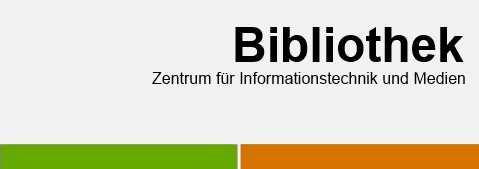Filtern
Erscheinungsjahr
- 2023 (121) (entfernen)
Dokumenttyp
- Wissenschaftlicher Artikel (41)
- Konferenzveröffentlichung (25)
- Video (21)
- Teil eines Buches (Kapitel) (16)
- Beitrag zu einer (nichtwissenschaftlichen) Zeitung oder Zeitschrift (4)
- Sonstiges (4)
- Rezension (3)
- Buch (Monographie) (2)
- Preprint (2)
- Masterarbeit (1)
Schlagworte
- Bionik (4)
- Dissipative Particle Dynamics (2)
- Field measurement (2)
- Solar modules (2)
- 360° Panorama (1)
- AI (1)
- Arbeitskräftemangel (1)
- Automatisierung, Journalismus, Literaturüberblick (1)
- Bericht an den Club of Rome (1)
- Big Data (1)
Institut
- Informatik und Kommunikation (27)
- Fachbereiche (15)
- Wirtschaftsrecht (15)
- Maschinenbau Bocholt (10)
- Institut für biologische und chemische Informatik (8)
- Wirtschaft Gelsenkirchen (6)
- Wirtschaft und Informationstechnik Bocholt (6)
- Institute (2)
- Westfälisches Energieinstitut (2)
- Elektrotechnik und angewandte Naturwissenschaften (1)
MFsim - An open Java all-in-one rich-client simulation environment for mesoscopic simulation
MFsim is an open Java all-in-one rich-client computing environment for mesoscopic simulation with Jdpd as its default simulation kernel for Molecular Fragment Dissipative Particle Dynamics (DPD). The environment integrates and supports the complete preparation-simulation-evaluation triad of a mesoscopic simulation task. Productive highlights are a SPICES molecular structure editor, a PDB-to-SPICES parser for particle-based peptide/protein representations, a support of polymer definitions, a compartment editor for complex simulation box start configurations, interactive and flexible simulation box views including analytics, simulation movie generation or animated diagrams. As an open project, MFsim enables customized extensions for different fields of research.
MFsim uses several open libraries (see MFSimVersionHistory.txt for details and references below) and is published as open source under the GNU General Public License version 3 (see LICENSE).
MFsim has been described in the scientific literature and used for DPD studies.
Jdpd - An open Java Simulation Kernel for Molecular Fragment Dissipative Particle Dynamics (DPD)
Jdpd is an open Java simulation kernel for Molecular Fragment Dissipative Particle Dynamics (DPD) with parallelizable force calculation, efficient caching options and fast property calculations. It is characterized by an interface and factory-pattern driven design for simple code changes and may help to avoid problems of polyglot programming. Detailed input/output communication, parallelization and process control as well as internal logging capabilities for debugging purposes are supported. The kernel may be utilized in different simulation environments ranging from flexible scripting solutions up to fully integrated “all-in-one” simulation systems like MFsim.
Since Jdpd version 1.6.1.0 Jdpd is available in a (basic) double-precision version and a (derived) single-precision version (= JdpdSP) for all numerical calculations, where the single precision version needs about half the memory of the double precision version.
Jdpd uses the Apache Commons Math and Apache Commons RNG libraries and is published as open source under the GNU General Public License version 3. This repository comprises the Java bytecode libraries (including the Apache Commons Math and RNG libraries), the Javadoc HTML documentation and the Netbeans source code packages including Unit tests.
Jdpd has been described in the scientific literature (the final manuscript 2018 - van den Broek - Jdpd - Final Manucsript.pdf is added to the repository) and used for DPD studies (see references below).
See text file JdpdVersionHistory.txt for a version history with more detailed information.
Aufgrund der Energiewende und den steigenden Anforderungen an die technische Gebäudeausrüstung gewinnt der Betrieb von Wärmepumpen in Gebäuden immer mehr an Bedeutung. Inzwischen existiert eine Vielzahl an Wärmepumpen-Systemen, die unterschiedliche Vor- und Nachteile sowie Einsatzmöglichkeiten aufweisen. Sofern die Installation einer Wärmepumpe für den Wohngebäudesektor in Betracht gezogen wird, muss eruiert werden, welches System sowohl ökologisch als auch ökonomisch für das Bauvorhaben am sinnvollsten ist. Hierfür wurde eine Bewertungstool entwickelt, das den Einsatz der unterschiedlichen Wärmepumpensysteme bewertet und auch Nutzern mit wenig Expertise eine Entscheidungshilfe ermöglicht. Für eine möglichst ganzheitliche Betrachtung können verschiedene Szenarien mit Hilfe des Bewertungstools überprüft werden. Hierzu können Indikatoren wie Standortdaten, Gebäudedaten, Parameter für die Trinkwassererwärmung, die Systemtemperaturen der Heizung und die Betriebsweise der Wärmepumpe im Tool variiert werden. Die Ergebnisse des Bewertungstools zeigen, wie die unterschiedlichen Nutzungsanforderungen sich auf die Jahresarbeitszahl und den Energiebedarf auswirken. Zusätzlich werden Investitions- und Verbrauchskosten für die unterschiedlichen Szenarien abgeschätzt und berechnet. Bei der ökologischen Bewertung wird der Fokus der Betrachtung auf den TEWI-Wert gelegt, um den Einfluss von verschiedener Kältemittel im Lebenszyklus der Wärmepumpe zu berücksichtigen.
n-type silicon modules
(2023)
The photovoltaic industry is facing an exponential growth in the recent years fostered by a dramatic decrease in installation prices. This cost reduction is achieved by means of several mechanisms. First, because of the optimization of the design and installation process of current PV projects, and second, by the optimization, in terms of performance, in the manufacturing techniques and material combinations within the modules, which also has an impact on both, the installation process, and the levelized cost of electricity (LCOE).
One popular trend is to increase the power delivered by photovoltaic modules, either by using larger wafer sizes or by combining more cells within the module unit. This solution means a significant increase in the size of these devices, but it implies an optimization in the design of photovoltaic plants. This results in an installation cost reduction which turns into a decrease in the LCOE.
However, this solution does not represent a breakthrough in addressing the real challenge of the technology which affects the module requirements. The innovation efforts must be focused on improving the modules capability to produce energy without enlarging the harvesting area. This challenge can be faced by approaching some of the module characteristics which are summarized in this chapter.
This paper reveals various approaches undertaken over more than two decades of teaching undergraduate programming classes at different Higher Education Institutions, in order to improve student activation and participation in class and consequently teaching and learning effectiveness.
While new technologies and the ubiquity of smartphones and internet access has brought new tools to the classroom and opened new didactic approaches, lessons learned from this personal long-term study show that neither technology itself nor any single new and often hyped didactic approach ensured sustained improvement of student activation. Rather it needs an integrated yet open approach towards a participative learning space supported but not created by new tools, technology and innovative teaching methods.
This paper presents a pragmatic approach for stepwise introduction of peer assessment elements in undergraduate programming classes, discusses some lessons learned so far and directions for further work. Students are invited to challenge their peers with their own programming exercises to be submitted through Moodle and evaluated by other students according to a predefined rubric and supervised by teaching assistants. Preliminary results show an increased activation and motivation of students leading to a better performance in the final programming exams.
Nachhaltigkeit von intelligenten Gebäuden - Ein Blick auf die Gesetzgebungen und Praxismöglichkeiten
(2023)
Gebäude sind durch ihre Herstellung und den Betrieb für einen erheblichen Teil der CO2-Emissionen in Europa verantwortlich. Die EU und Deutschland wollen durch milliardenschwere Maßnahmenpakete diese Emissionen bis zum Jahr 2045 (Deutschland) bzw. 2050 (EU) auf null reduzieren. Neben der Gebäudehülle als maßgeblicher Faktor für die Wärmebilanz zum Heizen und Kühlen spielt die Gebäudeautomation eine wichtige Rolle. Wie Gebäude intelligenter und smarter werden und wie sich das auf die Energieeffizienz auswirkt, soll im Folgenden betrachtet werden.


